- Home
- slideshows
- miscellaneous
- The best sleeping bags
The best sleeping bags
The best sleeping bag overall

The best sleeping bag for winter camping
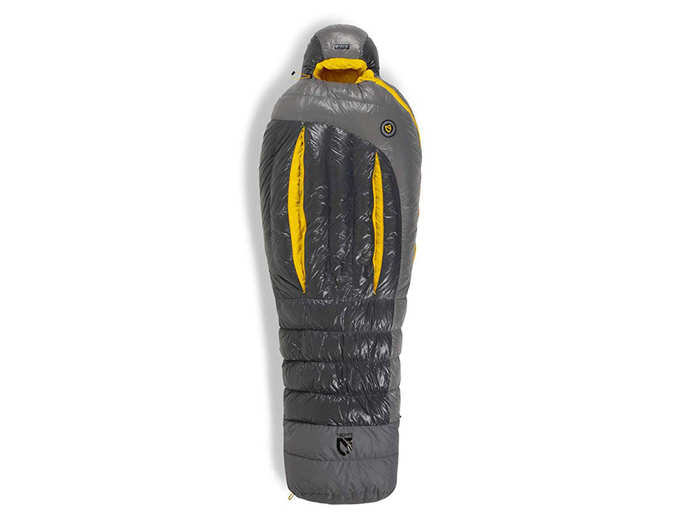
If you're camping in a cold environment or during winter, you'll need a sleeping bag designed to keep you extra warm. That's exactly what you get with Nemo's Sonic 0, a sleeping bag that offers a blend of traditional sleeping bag features with unique design elements that provide a high level of versatility.
The Sonic is insulated with 800 fill-power, hydrophobic down that provides plenty of warmth in temperatures dropping as low as 0ºF. The bag also comes with integrated draft tubes and a newly-redesigned draft collar, both of which help to keep cold air out and warm air in.
The designers at Nemo took things even further by using both waterproof and breathable fabrics, along with a thin layer of synthetic insulation. This provides extra comfort and protection from the elements, and the result is a sleeping bag that doesn't have any weaknesses in its armor when it comes to protecting campers and backpackers from the cold.
Other unique design elements include the brand's Thermo Gills and the Toaster footbox. Both were created in order to maintain a high level of comfort. The Thermo Gills are the most impressive as they help vent excess heat so efficiently that it actually raises the Sonic's temperature rating up by as much as 20ºF. The Toaster footbox was incorporated in order to improve warmth and breathability around the feet — a common cold spot in most other bags.
Priced at $500, most campers may find the Nemo Sonic 0 to be on the high end of their budget or out of their price range altogether. But that price is fairly competitive for a cold-weather sleeping bag that offers this level of performance and innovation. If you like to backpack during the winter, this is the bag you'll want.
Pros: Warm and spacious, has innovative features such as "Thermo Gills" to help improve temperature control and venting, good for side-sleepers
Cons: A little bulkier than most other bags and it's expensive at $500
The best ultralight sleeping bag
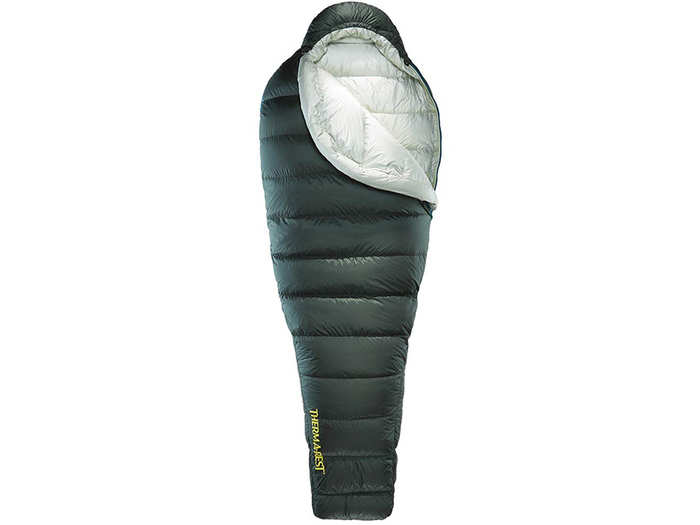
Backpackers who count every ounce need the Therm-a-Rest Hyperion 32. This bag weighs a mere 15 ounces, making it one of the lightest sleeping bags on the market. That alone should make it a favorite for ultralight hikers, although the Hyperion 32 dazzles with its compressed size and all-around comfort, too. It even comes with a built-in sleeping pad harness that helps keep your pad and bag from becoming separated in the night.
In order to get the weight of the Hyperion 32 down so remarkably small, Therm-a-Rest went extra light on the insulation. The company used 900-fill hydrophobic down but only in limited quantities. As a result, the bag isn't quite as warm as some of the others on this list. It also has a narrow, somewhat confining cut, which won't endear it to side-sleepers or those who aren't fans of mummy bags.
Thanks to its focus on being extremely lightweight rather than warm, the Hyperion 32 is best used in warmer weather conditions. From my own experience, using it from late spring through early fall is a fantastic option for backpackers looking to shave ounces off their pack. At other times of the year, it won't be warm enough to meet the conditions — though most ultralight sleeping bags have this exact common criticism.
Of course, ultralight gear does come at a price and the Hyperion 32 is no different. The bag sells for $340, which is on the spendy side for something with this temperature rating. When you factor in its weight-to-warmth ratio, the value of the Hyperion comes into focus. It's a sleeping bag that appeals to a specific crowd but those who buy it will undoubtedly appreciate what it brings to the table.
Pros: Extremely lightweight, packs down incredibly small, includes sleeping pad attachments
Cons: Not particularly warm, narrow design, expensive
The best budget sleeping bag
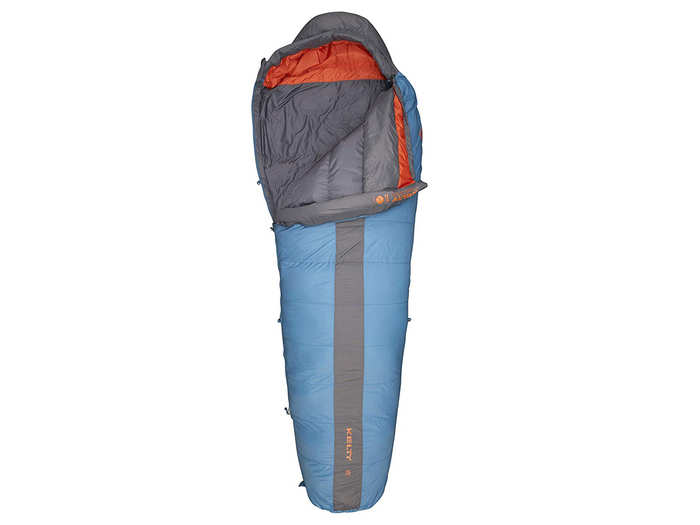
Make no mistake, you can buy sleeping bags that cost less than the Kelty Cosmic 20. However, they won't offer anywhere near the same level of performance. Finding a down sleeping bag for under $200 has always been somewhat of a challenge but Kelty managed to accomplish this feat, bringing a great entry-level option for those who don't have a large sleeping bag budget.
To hit the Cosmic 20's $170 price point, there were a few compromises that had to be made. Kelty used 600-fill down in the bag to keep costs down, although that insulation is still highly water-resistant. The bag's outer shell is made from a soft 20D nylon material and while this is adequate, it doesn't exactly scream high-quality.
The Cosmic 20 is also fairly heavy at 2 pounds, 13 ounces and doesn't offer the same level of compressibility you'd find in more expensive bags.
With that said, this sleeping bag still manages to provide plenty of comfort and functionality for campers on a budget. It performs reasonably well in cooler conditions and even delivers on its 20ºF temperature rating. It also features PFC-down and fabrics, which are better for the environment and your health, proving that even budget outdoor gear can be eco-conscious.
Having spent a few nights in the Cosmic 20, I can tell you it's a perfectly good sleeping bag that comes at an outstanding price. There are other bags that offer better performance and build quality, but those run nearly twice the price. If you don't have a lot of cash to spend on your outdoor gear, you'll be extremely pleased with what Kelty delivered.
Pros: Very affordable for a 20ºF down bag
Cons: Not as durable or well constructed as more expensive options
The best sleeping bag for casual comfort
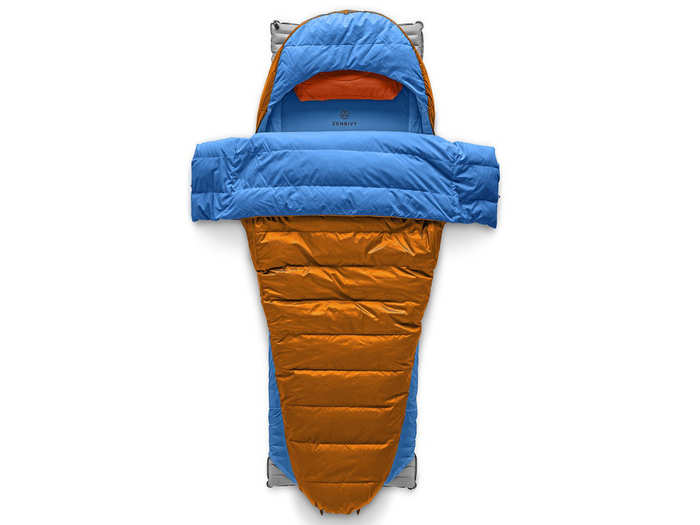
The result of a successful Kickstarter campaign, the Zenbivy Bed brings comfort and versatility to the backcountry by mimicking the bed you have at home. It does this by using a unique design that incorporates both a top quilt and a sheet designed to fit over a sleeping pad. This creates a sleep system that allows campers to freely move about in their sleep and to settle into more natural positions — it's unlike anything else on the market.
When using the Zenbivy Bed, campers attach the included sheet to their sleeping pad and then independently connect the blanket to the sheet. This allows each piece to act separately from one another, while still working together to provide comfort and warmth. The end result is a sleeping bag that offers more freedom of movement, while still retaining solid overall performance.
Having used the Zenbivy Bed on multiple occasions, its biggest drawback is that it takes a bit of practice to get everything to work together. Once you've done it a time or two, it gets easier but the first time you set it up just might leave you scratching your head about how everything works. Once you bring it altogether, you end up with a sleeping bag that's quiet, comfortable, and cozy. And since you'll feel less constricted and confined, you might just wake up more rested the next day.
Zenbivy's innovative design lends itself well to increased versatility, too. Just like the blanket on your bed back home, the Zenbivy bed's blanket can be turned down or bundled up as needed, allowing it to stay warmer in colder temperatures or vent excess heat when temperatures rise. It even opens at various points to improve airflow in general, allowing it to be used in a surprisingly wide range of climates.
Pros: Very comfortable, great for side-sleepers, sleeping pad integration, versatile
Cons: A little complicated at first, doesn't pack down as small as other options
The best sleeping bag for women
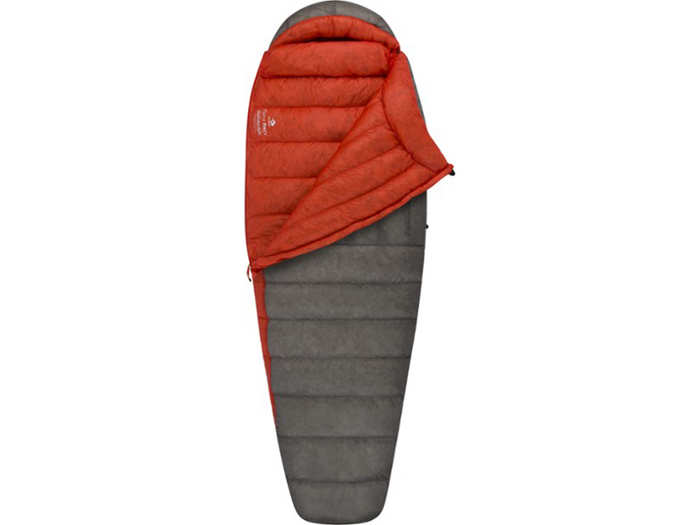
It used to be extremely difficult for women to find a sleeping bag that met their specific needs. Thankfully, those days are long gone and it's now possible to find a number of options built from the ground up with female campers and backpackers in mind. The Sea to Summit Flame Ultralight 15 is a good example of this, as it takes into account a woman's shape, as well as their need for more warmth, to deliver a comfortable night's sleep.
The bag uses high-quality 850+ fill-power hydrophobic goose down as its insulator, which not only makes it warm but soft and lofty, as well. But it takes more than just good insulation to make a sleeping bag comfortable in cold conditions. In order to achieve that, Sea to Summit did extensive research to learn exactly where the down should go, using body-mapping techniques to improve performance.
The Flame Ultralight's design was influenced by body mapping in other ways, too. For instance, the bag is narrower in the shoulders compared to most men's sleeping bags. It's also shorter overall and offers more room between the hips and knees in order to facilitate side-sleepers. These simple yet well thought out changes help keep cold air from reaching the interior while also providing a generous amount of space.
If there's a knock against the Sea to Summit Flame 15, it's definitely the price. At $529, it's quite a hefty investment, even though it's a sleeping bag that should continue to perform at a high level. If you can get past the price tag, you'll be buying one of the best women's sleeping bags ever made.
Pros: Female-specific design, cozy, good weight-to-warmth ratio
Cons: Expensive, short zippers
The best sleeping bag for kids
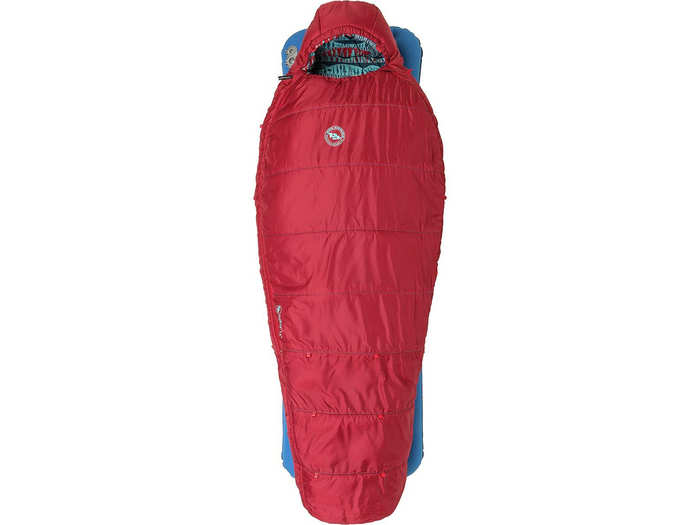
One of the biggest drawbacks of buying outdoor gear for kids is that they outgrow it after only a few uses. The same holds true for most sleeping bags, although the Duster 15 from Big Agnes looks to change that.
The designers at Big Agnes set out to create a sleeping bag that could somehow grow along with the kids using them. It came up with a system of hooks and loops that give parents the ability to shorten the length of the bag when their kids are smaller, while gradually increasing the length as they grow. As a result, the Duster 15 is made to accommodate campers who fall between 4'5" and 5'6" in height, providing a level of versatility not found anywhere else.
Just because this bag is aimed at kids doesn't mean it doesn't the same features you'd find on an adult bag. For instance, Big Agnes included a no-draft collar, zipper, and wedge, which helps to keep cold air out. It also comes with built-in liner loops and the ability to attach it to a sleeping pad. A contoured hood offers a comfortable fit to go along with added warmth, while the bag is built to keep insulation close to the body, even when adjusting to a growing child.
Unfortunately, the synthetic insulation may not be efficient enough to actually live up to the Duster's 15ºF rating. Considering how easy it is for kids to get cold, it's likely they'll start to feel uncomfortable even at warmer temperatures.
Compared to other sleeping bags for kids, the Duster is a bit heavier and doesn't pack down quite as small. This is due largely to its ability to resize, however. Considering that feature keeps you from buying a new bag every year, it seems like a decent trade-off. The $109.95 price tag is also quite affordable, particularly since the Duster should be useful for many years.
Pros: Made specifically for kids, unique design allows bag to grow with the child, affordable
Cons: Not as warm as it should be, relatively heavy, doesn't pack as small as some bags
Popular Right Now
Popular Keywords
Advertisement